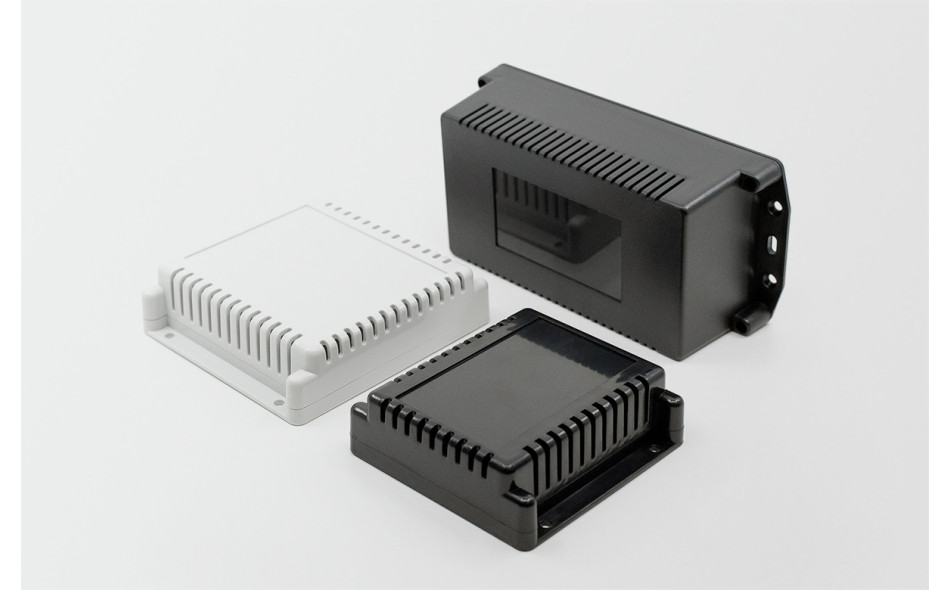Sensor Enclosures: Quick Guide to Choosing the Best Electronic Housing
Comparte esta noticia

In the world of electronic devices, sensors have become indispensable. From industrial automation to home automation, they play key roles such as measuring temperature, motion, air quality, and even ambient light. However, one crucial element is often overlooked: the enclosure that protects and enhances the sensor.
Sensor enclosures are not only used to protect circuits; they are also essential for ensuring the accuracy of the sensor, the durability of the system, and a clean and safe installation. Additionally, enclosures serve an aesthetic function—acting as the “skin” of the product. An attractive casing creates a strong first impression for the end user, enhancing the perception of quality, reliability, and professionalism.
Whether it's for a PIR sensor, a temperature sensor, or a CO₂ detector, choosing the right enclosure can make the difference between an efficient device and a faulty one.
What Should You Know Before Choosing a Sensor Enclosure?
The key lies in combining three factors: functionality, design, and durability.
From our experience, the most effective enclosures are those with simple lines and lateral ventilation. This allows for natural airflow, which is ideal for thermal or air quality sensors, where a sealed enclosure would distort the readings.
“Many of these enclosures feature ventilation slots to allow free airflow, making them ideal for applications like air detection, PIR sensors, and temperature measurement.”
Moreover, quality enclosures offer rear mounting points and well-designed cable entries, enabling quick and discreet installation without exposed wiring.
“Many products in this range include rear cable entries and several wall-mounting points, allowing the installer to position them optimally while keeping wiring out of sight.”
Types of Sensor Enclosures (and When to Use Each One)
Each application requires its ideal type of housing. These are the most common:
1. Ventilated Enclosures
Perfect for temperature, humidity, CO₂, or air quality sensors. Their slotted design allows air to pass through, ensuring accurate readings of real conditions.
2. Aesthetic (Visible) Enclosures
Used in industrial or outdoor environments. They offer protection against dust, water, and even chemicals. Ideal for motion sensors installed outdoors or in production plants.
3. Low-Profile Enclosures
Designed for tight spaces and discreet installations, such as sensors in retail spaces, museums, or homes. Their look is clean and elegant.
4. Compact Enclosures
Suitable for small sensors or installations with limited space, such as PIR sensors or discreet devices. These enclosures feature optimized designs for simple, practical, and secure installation without compromising sensor accuracy or internal protection. Their compact size allows seamless integration in a variety of environments.
Key Features to Consider
When choosing an enclosure, it’s not just about the material or size. Keep an eye on the following:
1. Proper Ventilation
Essential for ambient sensors. Without good airflow, sensor readings can be inaccurate or delayed, and may even affect audio signaling functions.
2. Mounting System
Look for enclosures with multiple mounting options: wall, ceiling, or flat surface. If using a snap-fit system, make sure it closes securely to avoid loose connections.
3. Aesthetic and Design
Especially important if the sensors will be visible to users. A sleek and modern design can elevate the entire project.
“Supertronic’s range of plastic enclosures for sensors combines easy installation with elegant design.”
Where Are Sensor Enclosures Used?
The possibilities are vast. Here are some real-life examples:
In Homes and Offices
-
PIR sensors for lighting control
-
Ambient thermometers for HVAC systems
-
CO₂ detectors for automatic ventilation
In Businesses and Industries
-
Access control with magnetic sensors
-
Presence detection in industrial facilities
-
Gas or humidity detection in sealed chambers
In Agriculture and Greenhouses
-
Soil moisture or ambient temperature sensors
-
Weather condition monitoring with outdoor sensors
“Their design and versatility make them a popular choice for installing sensor probes in heating and lighting systems, enabling remote monitoring in both commercial and residential environments.”
Customization Services
We know each device is unique, which is why we customize our plastic enclosures to fit your electronics perfectly. We offer:
-
CNC machining: we drill any hole needed for a perfect fit
-
UV digital printing: high-resolution, durable text, logos, or images
-
Special injections: custom colors or materials (with minimum quantities)
-
Adhesive overlays or membrane keypads: fully tailored for enhanced functionality and aesthetics
“All our enclosures can be customized to your needs, including CNC machining, UV printing, special injections (color and/or material), adhesive overlays, and membrane keypads.”
Final Practical Tips
-
Don’t choose based on price alone—a cheap enclosure that doesn’t protect well will cost more in the long run.
-
Confirm the internal dimensions—make sure your PCB or board fits without stress.
-
Always check the technical datasheet for specifications.
-
Ask for a sample, if possible—testing an enclosure before a bulk order can save you major headaches.
If you need technical assistance, don’t hesitate to reach out to our Supertronic sales team to learn more about our custom solutions and how we can help take your project to the next level.
Whether you're developing a home sensor, an industrial system, or an IoT solution, choosing the right enclosure is just as important as choosing the sensor itself.
Don’t underestimate this decision. Take a few minutes to compare, consult, and, if needed, customize. You’ll notice the difference from the very first use.
